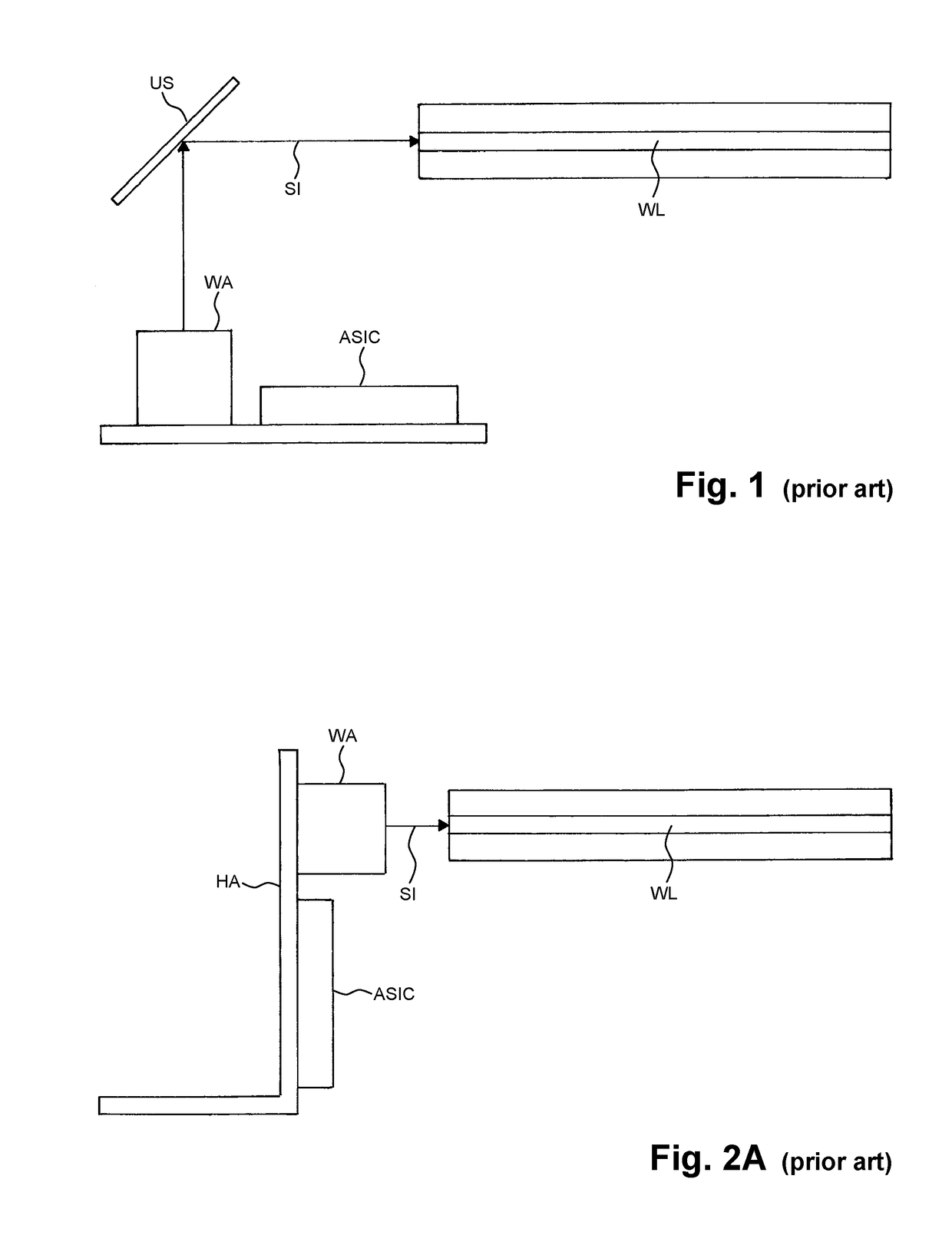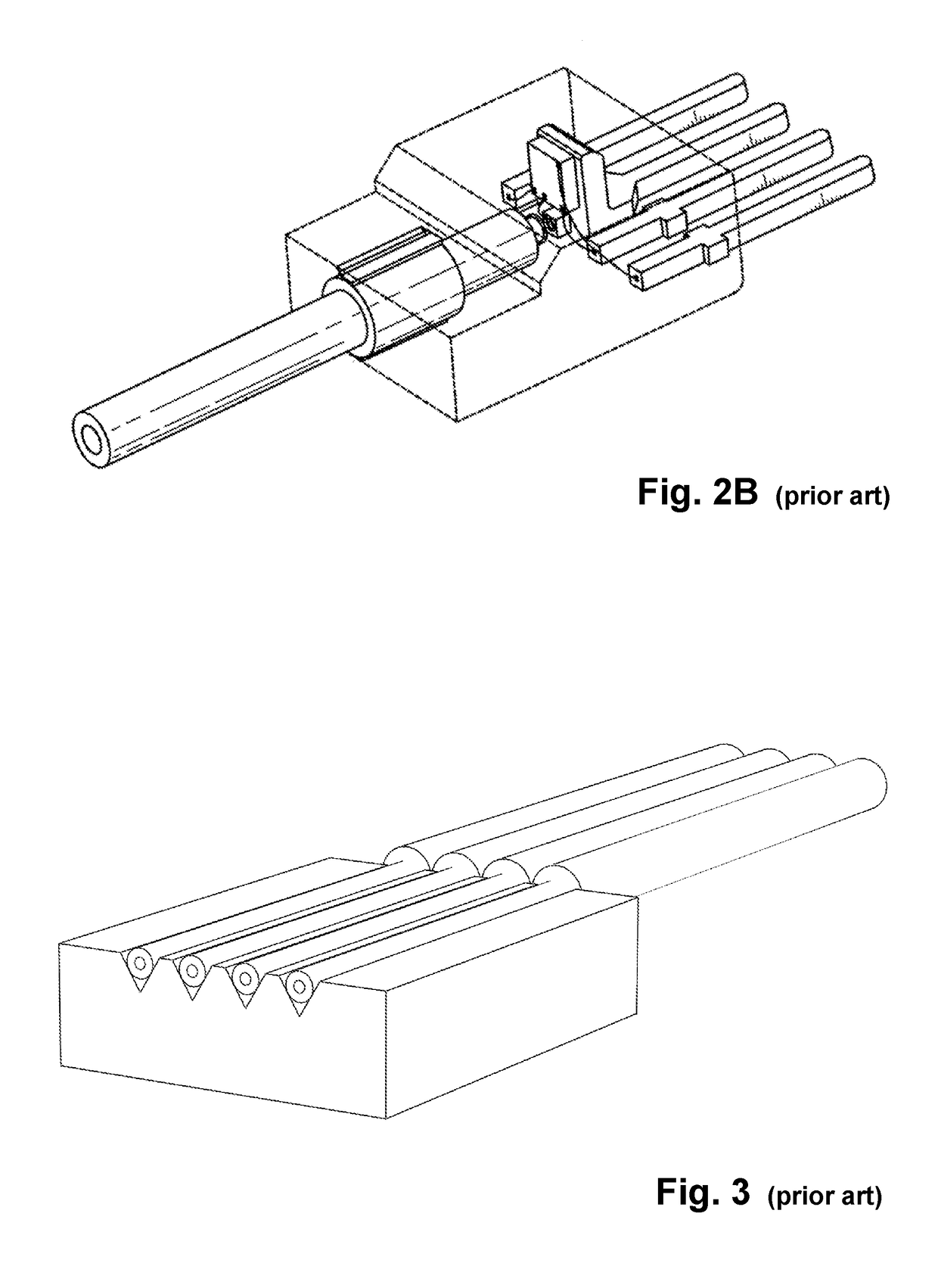Device for incoupling and/or outcoupling optical signals
a technology of optical signals and incoupling devices, applied in the direction of optics, instruments, optical light guides, etc., can solve the problems of increased manufacturing costs, increased optical loss, and increased optical loss, so as to achieve low optical loss and low manufacturing costs
- Summary
- Abstract
- Description
- Claims
- Application Information
AI Technical Summary
Benefits of technology
Problems solved by technology
Method used
Image
Examples
Embodiment Construction
[0093]In order to avoid unnecessary repetitions, the explanations below relate to all seven of the exemplary embodiments of the present invention illustrated on FIG. 5A to FIG. 11C with respect to the configurations, features and advantages of the present invention, unless otherwise indicated:
[0094]The send-site layouts on FIG. 5A to FIG. 11C present respectively a device 100a, 100b, 100c, 100d 100e, 100f, 100g for coupling optical signals into a waveguide 10. The device 100a, 100b, 100c, 100d 100e, 100f, 100g has a send-site circuit (not shown), which based on incoming signals from send-site terminal contacts 22 actuates an electro-optical converter 28, which sends out the optical signals in the direction of the axis 12 of the waveguide 10.
[0095]The receive-site layouts on FIG. 5A to FIG. 11C present respectively a device 140a, 140b, 140c, 140d 140e, 140f, 140g for decoupling optical signals from at least one waveguide 10 in an opto-electrical converter 68, which receives the optic...
PUM
 Login to View More
Login to View More Abstract
Description
Claims
Application Information
 Login to View More
Login to View More - R&D
- Intellectual Property
- Life Sciences
- Materials
- Tech Scout
- Unparalleled Data Quality
- Higher Quality Content
- 60% Fewer Hallucinations
Browse by: Latest US Patents, China's latest patents, Technical Efficacy Thesaurus, Application Domain, Technology Topic, Popular Technical Reports.
© 2025 PatSnap. All rights reserved.Legal|Privacy policy|Modern Slavery Act Transparency Statement|Sitemap|About US| Contact US: help@patsnap.com



